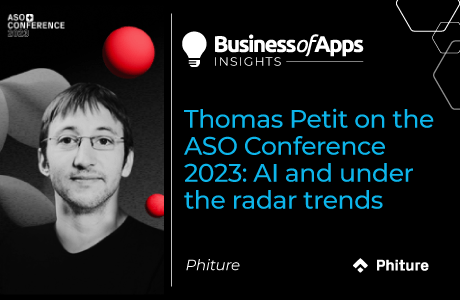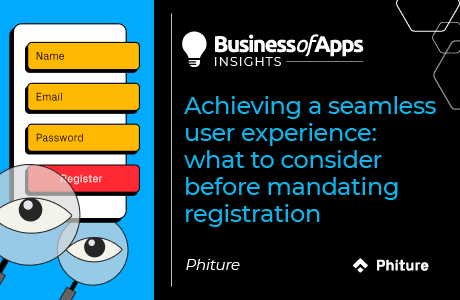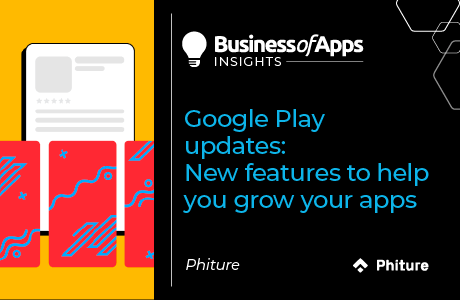The execution of performance marketing campaigns has changed significantly in recent years due to new policies that protect user privacy. These developments are a good thing for all, though it means marketers must adapt their performance marketing campaigns and strategies in light of the limitations placed on them by privacy-first policies. In this article, we run you through the current state of play and identify areas you can adapt your performance marketing campaigns to thrive in a privacy-first context.
This post was first published on phiture.com.
The state of play
While it used to be the case, as a result of Apple’s Identifier for Advertisers (IDFA), marketers having full visibility of their campaign performance and full targeting capabilities came to an end with the launch of iOS 14 and the SKAdNetwork. Apple’s example is set to be followed by Google, starting with the privacy sandbox for Android, followed by plans to phase out third-party cookies from Chrome. Amid the wider context of Europe-wide GDPR regulations, the stage is set for a more privacy-centric landscape.
In our experience as a performance marketing agency and consultancy, we see privacy-first marketing campaigns causing two major pain points:
- It’s harder to measure campaign results.
- It’s harder to target users.
In terms of measurement, things seem to be looking up for app marketers, with SKAdNetwork 4.0 offering three postbacks instead of one as well as additional digits available for the source identifier.
Regarding targeting, however, we are beginning to see a shift towards rather less control for marketers. Google app campaigns are a clear example of this, with very limited targeting options. Recently, Meta has introduced ‘smart performance campaigns’. While these changes are not necessarily related to privacy, they are worth keeping an eye on. This trend implies a sharper focus on creative quality over targeting.
So how can app marketers get ahead of the potential problems new privacy concerns are bringing up? Here are our recommendations to better adapt your marketing campaigns in the age of privacy:
Prioritize creatives
Creatives are arguably the most critical component for campaign success, especially on social media ad channels such as Meta, TikTok, and Snapchat.
With so much organic content on social media channels, the battle for attention is fierce. Your ads need to stand out in order to be pushed effectively by the algorithms.
That means you need to prioritize creating top-quality creatives and fully optimize your ad message to score ‘creative hits.’ A creative hit can be defined as a creative that is able to deliver the desired KPIs while also maintaining at least 20% of total ad spend.
🔍 Master Onboarding with JTBD & MaxDiff
Discover how to optimize your app’s onboarding process using the Jobs-to-be-Done framework and MaxDiff analysis.
Download nowHere you can see how to create winning social media creatives for every channel while checking out our guide to systematic reporting on creative hits to ensure continuous creative improvement to your campaigns.
Keep on testing
Don’t leave your campaigns to run on autopilot: always test different approaches and new channels and expand into new markets. Make sure you always keep some budget for testing. This could potentially unlock new growth opportunities beyond your core focus.
Creatives should represent the biggest aspect of your testing. Make sure you diversify your creative approach, take risks, and try out novel approaches.
In order to find creative hits you should start out by testing ‘horizontally.’ This means testing unique concepts first, that is, ideas that are completely new, and different to existing creative concepts. Then test vertically by iterating on the best-performing creative concepts.
At Phiture we use the Persuasion Emotion Trust (PET) model, pioneered by Human Factors, to develop creative concepts – a psychology-driven framework producing more effective and engaging ads.
The model is broken down into three categories: Persuasion, Emotion, and Trust. Each has its own range of sub-tactics and is a great way to kick-start the creative brainstorming process.
There are a couple of important considerations when testing creatives:
- Set a realistic number of tests depending on your available resources and budget. You might otherwise risk overloading your teams, which in turn will impact the quality of creatives produced. Without a definite number of tests, you might also be spreading your testing budget too thin.
- When Setting up your reporting structure align internally on which KPIs to prioritize and create a scoring system that eliminates guesswork. Additionally, decide on which dimensions you’ll be analyzing such as: asset type, conversion tactic, video length and so on. This will help determine patterns and insights when analyzing the results, from a single creative to an overarching dimension.
Some best practice advice when testing creatives:
- Separate your tests from your ever-green (always-on) ads.
- Watch out for creative fatigue (creatives losing their wow factor).
- Be aware that the user’s attention spans are getting shorter, so make the first 3 seconds of your ad count.
- Adapt your creative assets for each channel.
- For short video formats such as Insta Story, Reels, TikTok, or Snapchat, create ads that resemble organic content as much as possible.
- Have a clear CTA.
Prioritize user-generated content
User-generated content (UGC) has become an important part of any creative strategy in recent times. UGC is especially relevant for paid social media channels, as a result of the rising popularity of content creators and the rise in popularity of short video format platforms such as Snap, TikTok, and Insta Reels. For reference, TikTok currently has over 150 million active users in the USA alone.
While the benefits of bringing UGC into your paid ad strategy are clear, great user-generated content is hard to come by, and creating a regular pipeline to deliver excellent content is even harder.
Brands aspiring to leverage the power of UGC need to be a bit savvier when building their next creative hit.
Here are a few sources you can look at to source excellent UGC:
- TikTok creator marketplace.
- Collaborating and reaching out to content creators.
- Internal resources. Consider shooting the ad yourself!
Be sure to check out our TikTok stack for more inspiration on how to realize great performance marketing campaigns with this platform.
Don’t underestimate user retention strategies
As acquiring new users becomes more difficult, user retention has become more important than ever. This importance is further heightened when we consider the increased acquisition costs and competition in general.
Creating a mobile app retention strategy to optimize user retention will help increase the Lifetime Value (LTV) of a user and decrease churn.
How to calculate user retention rate?
Retention rate can be calculated as follows: Identify the number of users at the beginning of the time period. Let’s call this number “X”. Identify the number of users who continue to use your product or service at the end of the time period. Let’s call this number “Y”. Calculate the retention rate by dividing Y by X and multiplying the result by 100. The formula is: retention rate = (Y / X) * 100.
This can be achieved by analyzing the user journey from onboarding to conversion and optimizing it by understanding where churn occurs and by reducing friction.
Onboarding is crucial as users downloading a new app are prone to delete it if it doesn’t meet their expectations or if the onboarding process is confusing. Therefore, keep onboarding simple and personalize it as much as possible.
Another excellent source of user retention is to reactivate dormant users. Be smart about what and when to communicate with them, be that via email or push notifications.
Optimize app marketing campaigns for iOS and Android
Make sure you assign enough budget, pass the privacy thresholds, and opt for broader targeting on your iOS campaigns. Concurrently, use your Android campaigns more for creative and audience testing, and apply the learnings gleaned from iOS campaigns here.
Remember, iOS campaigns are prone to experiencing more data delays. So plan this into your testing schedule accordingly. Retargeting is also more limited on iOS, so we suggest testing by retargeting users who are already engaged with your social media content.
Explore blended metrics and organic uplift analysis
Organic uplift represents the correlation between organic and non-organic installs. It is used to measure how many additional organic users are expected to install your app as a result of paid activity.
Blended metrics on the other hand evaluate the total paid and organic results. It is an important metric to look at from a strategic and top-level perspective.
There are a few reasons why looking at organic uplift and blended metrics is beneficial to app marketers:
- Driving paid downloads will likely push your app up in the app store search ranking.
- Difficulties in measurement or attribution. This could be due to privacy-related issues or simply because a channel is naturally difficult to attribute or measure, such as brand campaigns or influencer campaigns.
- User behavior is sometimes unpredictable. The conversion journey of some users may be difficult to follow or measure.
Optimize for customer lifetime value
Customer lifetime value (LTV) is a crucial metric that provides a running estimate of how much an app user, on average, is likely to generate in revenue.
It provides a more realistic approach compared to looking at immediate results, which don’t necessarily represent the real value generated and might underestimate the contribution of marketing efforts. This is especially true for apps that rely on long-term revenue streams such as subscription-based apps.
LTV helps with better marketing budget allocation. It also helps set a more accurate basis for cost per acquisition (CAC).
It’s quite important to understand the LTV for different cohorts such as different geographical locations, marketing channels, device types and combinations of these previous factors.
Explore media mix modeling
A Media Mix Model (MMM) is a framework for determining the optimal allocation of media spend across different marketing channels, which works to remove bias and guesswork around the allocation of marketing budgets.
While not a new concept, MMM is gaining traction with marketers looking to improve the efficiency of budgeting and media planning as well as forecasting the impact of future campaigns.
MMM is quite important when taking a holistic view of the marketing channels available. We often look at media channels in silos, while in reality, a user may have multiple touchpoints before finally converting.
Focus on tactical approaches and urgency triggers
In reality, people are not always in ‘buying mode’. They are not in a hurry either and they tend to procrastinate. It’s the same as in a physical shop when good floor staff know when a customer is browsing and when they’re ready to be approached.
It’s all about timing and respecting when and how to make contact with customers. However, that doesn’t mean you can’t create a sense of urgency to move the process along. After all, customers tend to make decisions more quickly when the thing they want has limited availability.
Imagine you’re looking at a flight ticket and you see the following message: “4 seats available at this price”. That creates urgency, and although you know it could be a marketing tactic, there’s still something in the back of your mind that makes you more likely to book right now.
A time-limited tactical offer is a very powerful conversion tactic. Remember, users want a good deal in return for buying right now. It’s all about striking the right price-to-value ratio. Don’t focus so much on the ‘cheap’ aspect, but more on the time-sensitive nature of the offer. You can read more about the dos and don’ts of dynamic pricing here.
Explore growth opportunities beyond paid media ads
Opportunities beyond paid media ads could include: Content Marketing, Endorsement Marketing, Sponsorships and Organic Social Content.
Such growth channels, while harder to measure compared to paid channels, do represent an opportunity to build brand awareness, brand affinity and – if you’re lucky – virality.
When planning your content marketing, make sure you develop a marketing calendar, as this will help you map out your key marketing activities throughout the year. It will also help you to plan ahead of time and avoid last-minute initiatives. Expecting results from half-baked ideas the day of posting is always unrealistic.
Planning at least one month in advance allows you to maximize user attention, as users will be more likely to engage with content related to major events, seasonal content or current social media trends.











